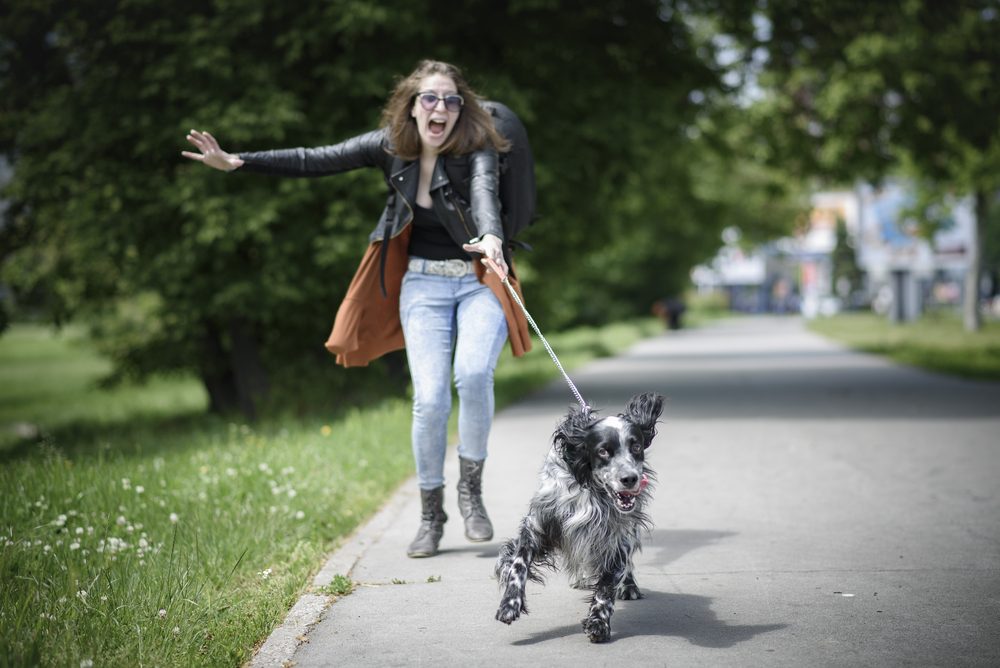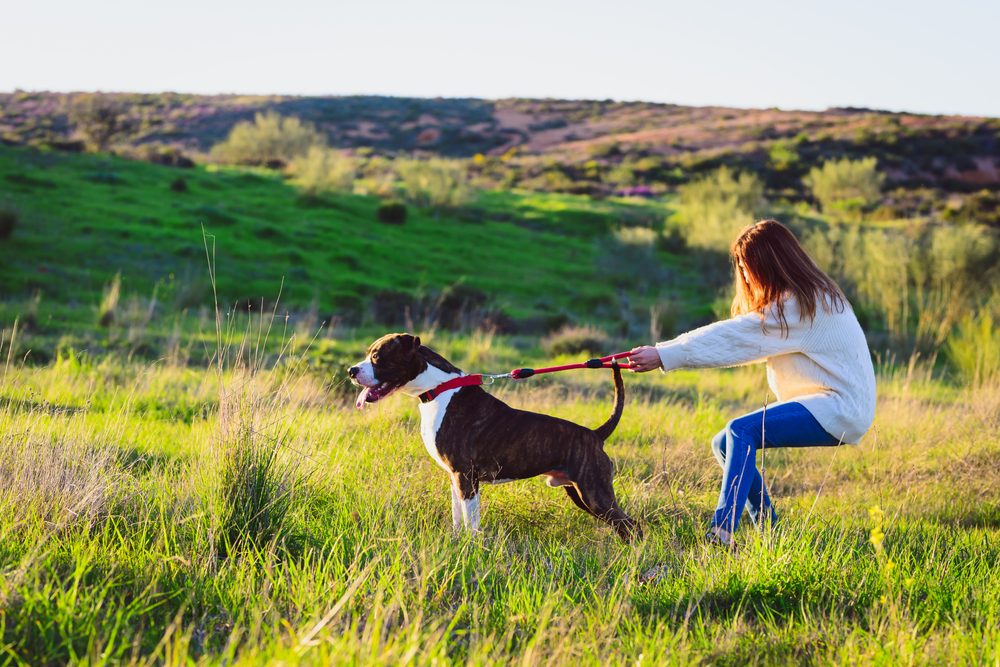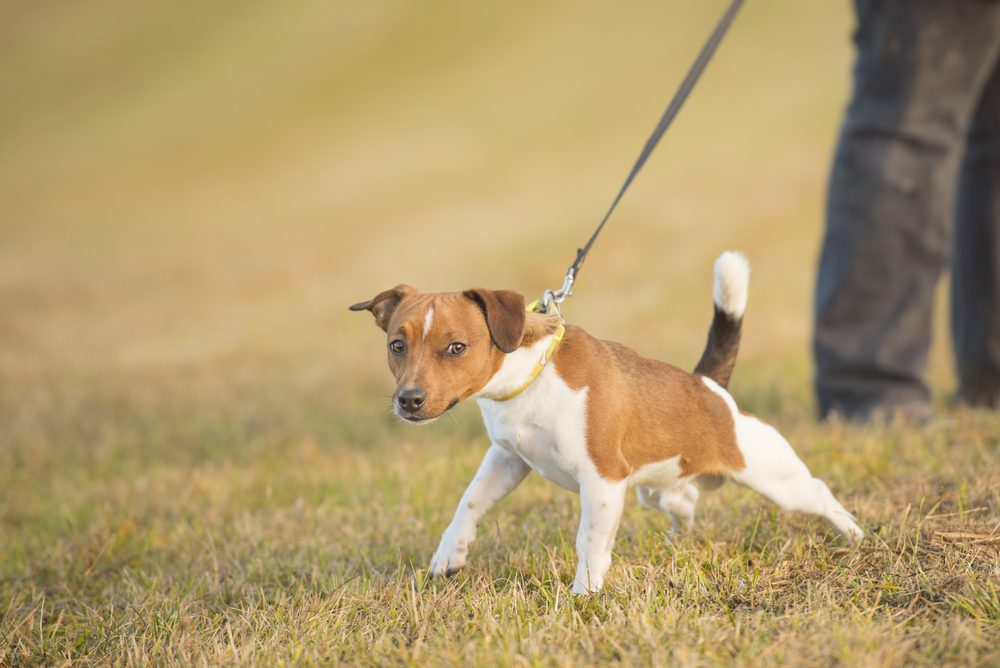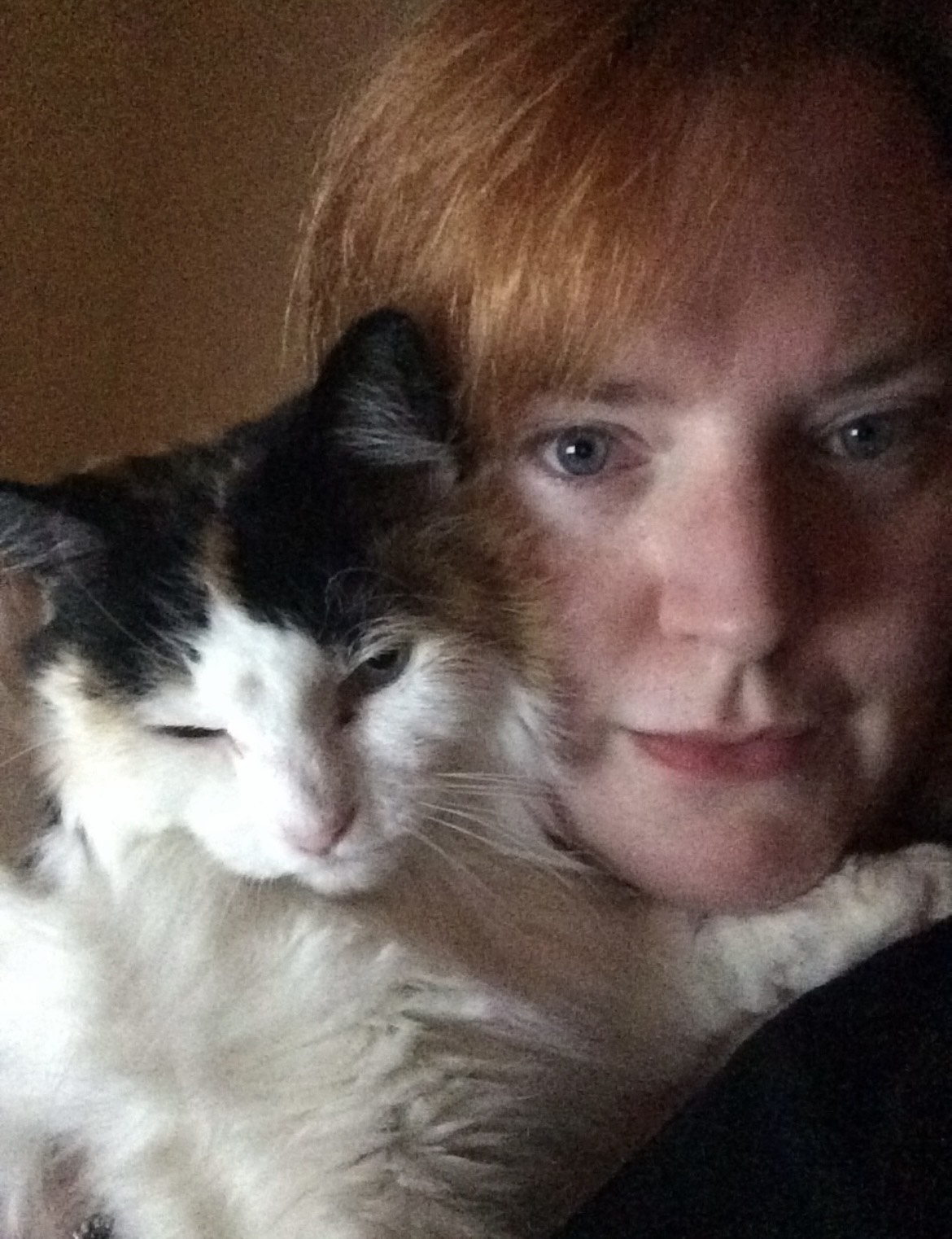Leash pulling, which is not to be confused with leash aggression, is one of the more problematic behaviors dogs exhibit during walks. Sometimes, it can even feel like your dog is the one taking you for a walk instead of the other way around. No matter how much your pooch wants to get out and go, you need to stay in control. If you’ve ever wondered how to get a dog to stop pulling on their leash, you’ve come to the right place. We’ll get to the bottom of this frustrating behavior, so you can stop searching “how to train a dog not to pull on leash” once and for all.

Why do dogs pull on their leashes?
Contrary to popular belief, your dog doesn’t pull on his leash because he’s trying to assert dominance over you. Dogs pull on their leashes because we’re moving too slowly for them, and they’re excited to get out and explore the great outdoors. When your dog pulls on his leash, you walk faster to keep up with him, effectively rewarding his behavior. Because dogs learn best through positive reinforcement, you’re inadvertently encouraging the very behavior you want to correct. Fortunately, there are ways you can get your pup to stop pulling on his leash. Here’s what you need to know.
How to get your dog to stop leash pulling
Taking your dog for a walk can be a nightmare when he seems more interested in pulling on his leash than doing his business, but there is hope in sight. A few words of caution, though: Regardless of how badly you want one, there is no overnight fix. According to Dr. Karen B. London, “Teaching your dog to walk calmly on a leash without pulling will require a lot of patience and practice, but it can be done.” Let’s review how.
1. Switch from a collar to a harness
One of the reasons dogs have such an easy time walking us is because of the laws of physics. The collar forms a single point of force, allowing dogs to throw their full body weight forward. A harness, in contrast, evenly distributes their weight. With the ball back in your court, you’ll be better able to control your dog’s movements, and he won’t be able to pull so hard on his leash.
2. Ensure your dog gets plenty of exercise off his leash
If the only playtime your dog gets is leashed, no wonder he’s eager to head outside and explore. Make sure you provide plenty of mental and physical stimulation when he’s off his leash. Let your pup outside in the yard if you have one. If not, there are plenty of fun indoor activities you can do with your pooch. Allow your dog to expend some of his energy before you go outside, and he’ll be less rambunctious — and less likely to tug on his leash — once you’re out.
3. Make a game of teaching your dog to follow you
Instead of allowing your pooch to pull you forward, take several steps backward and tell him, “Follow me.” When he joins your side, give him plenty of praise and attention. You can also give him a treat to encourage him to follow you, though you’ll want to wean him off the treats sooner rather than later. According to Sarah Fraser, a professional dog trainer and co-founder of Instinct Behavior & Training, “The game helps your dog focus and move with you.”
4. Don’t let him lead you
When your dog begins pulling at his leash, plant your feet firmly and stand completely still. Your dog will eventually get the message and turn to give you his attention. Once the leash is relaxed, you can begin walking again. Stop as soon as your dog begins to tug. You may need to repeat this numerous times until your pup catches on, but he’ll eventually learn that trying to walk you means he won’t be walking anywhere.

No matter how frustrated you get with your dog, you should never raise your voice, yank on the leash, or spank him. In addition to confusing your dog, it may also cause him to become fearful of your hands — or of you in general. Even worse, negative reinforcement doesn’t teach dogs anything, so resist the urge to punish your pup when he pulls on his leash. If nothing you’ve tried has stopped him from leash pulling, it may be time to consult a professional. Sometimes, we all need a bit of help training our dogs, and that’s OK.




